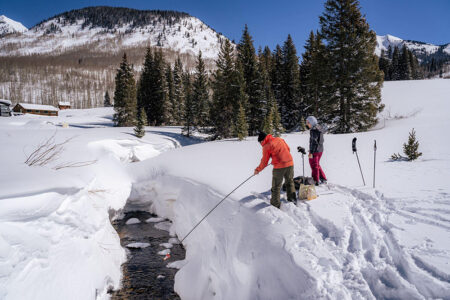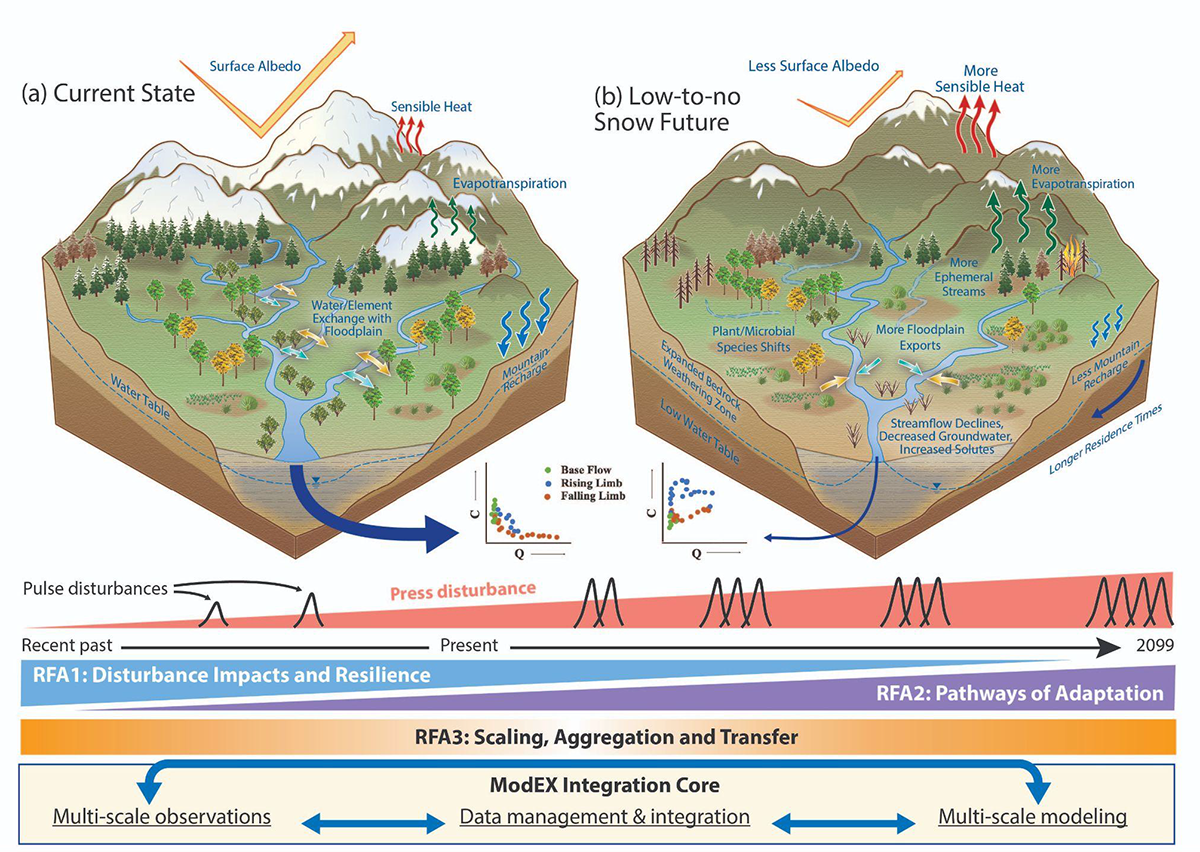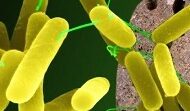Watershed Function Science Focus Area: Functional Traits and Watershed Resilience
Interactions of warming and drought with hydro-biogeochemical functioning in mountainous watersheds
Project website | Overview brochure PDF

Principal investigator: Eoin Brodie
Laboratory Research Manager: Kristin Boye
Watersheds provide key resources for human populations, with pressing demands for clean water, food, and energy. In parallel, compounding disturbances are significantly reshaping interactions within watersheds throughout the world. Mountainous watersheds are the “water towers of the world” with more than 40% currently supporting a seasonal snowpack critical for water storage and release to regions downstream.
Regional modeling and observational studies of Western U.S. mountainous systems suggest significant changes in snowpack and snowmelt timing within the coming decades, in addition to temperature-driven extremes (e.g., heatwaves and drought) in regions such as the Upper Colorado River Basin (URCB). Most water and water-borne nutrients, carbon, and other environmentally important elements enter river networks through headwater catchments that can be highly variable but are not well understood.
This research aims to quantify this variability and reduce the uncertainty in predictions of temperature-driven disturbance impacts on these ecosystems and their services. A deeper understanding of mountainous watershed functions is needed as changing mountainous hydroclimate is projected to cause trillion dollar impacts across the Western United States in coming decades.

Research Locations. Watershed Function research focuses on the Upper Colorado River Basin. [Courtesy Lawrence Berkeley National Laboratory]
Watershed Function SFA research focuses on the UCRB and builds upon research in the East River while expanding into the Taylor River watershed. Both are representative and vulnerable headwater systems within the UCRB, collectively forming the Gunnison River mainstem that accounts for just under half of the Colorado River’s discharge at the Colorado/Utah border. The Colorado River and its headwater tributaries supply water for municipal use to more than one in 10 Americans, irrigation for more than 5.5 million acres, and more than 4,200 megawatts of electrical-generating capacity for millions of people.
Research Focus Areas
Within the SFA, three Research Focus Areas (RFAs) explore how hydrological, ecological, and biogeochemical processes react and interact, shaping watershed response to environmental change now and in the future. A central hub (ModEx Integration Core) connects these areas, allowing for continuous model refinement and model-driven observation and experimentation.

Watershed Function Science Focus Area Research Plan. [Courtesy Lawrence Berkeley National Laboratory]
RFA2: Pathways of Adaptation will explore how watersheds will adapt under a changing environment and how changing trait distributions, brought about by temperature-driven changes to the energy-water balance, affect hydro-biogeochemistry.
RFA3: Trait Covariation, Aggregation, and Transfer will determine the properties of watershed trait covariation, ascertain how functional trait covariation aggregates to influence watershed function (e.g., nitrogen export) using high-resolution ecosystem models, and develop machine learning–based surrogates for knowledge transfer and scaling beyond subcatchments.
Understanding the mechanisms that underlie watershed resistance and resilience to disturbance and identifying pathways of adaptation to future low-snow conditions will enable informed decision-making regarding water resources, land management, and environmental change adaptation, particularly in mountainous regions.
Project Culture and Collaboration

East River Watershed. The Science Focus Area builds upon research in the East River while expanding into the Taylor River watershed. Both are representative and vulnerable headwater systems within the Upper Colorado River Basin. [Courtesy Lawrence Berkeley National Laboratory]
The SFA is aligned with a key LBNL priority called Biological and Environmental Program Integration Center (BioEPIC), a new building that will provide one-of-a-kind experimental capabilities for deep investigation of soil-microbe-plant interactions under controlled laboratory conditions and through virtual connections to field sites. The team also leverages other significant BER investments, including ESS-DIVE, IDEAS, and KBase, and takes advantage of BER-supported facilities, such as JGI and EMSL, as well as SLAC core capabilities in synchrotron science and DOE National Energy Research Scientific Computing Center supercomputing and Energy Sciences Network capabilities.
2024 Abstracts
Videos
East and Taylor River Tour
A LBNL team shows aerial views of the East and Taylor River systems, Colorado.
Introduction - Watershed Function SFA
A LBNL team studies ecosystem changes in a research area along the East River catchment near the Upper Colorado River headwaters.
Plants as Sensors - Watershed Function SFA
A LBNL team studies changes to plant communities along the East River catchment near the Upper Colorado River headwaters.
Nitrogen Worlds - Watershed Function SFA
LBNL scientists are working to identify major inputs and exports of nitrogen in a pristine East River, Colorado, watershed system.
4D Digital Watersheds
LBNL researchers study ecosystem changes in a research area along the East River catchment near the Upper Colorado River headwaters.
Characterizing Rifle Subsurface Microbes
LBNL’s Jill Banfield on how the DOE JGI advanced her research on the roles of subsurface microbial communities in biogeochemical cycling (2015).
Metabolic Potential
LBNL researchers discuss how metabolic lifestyles of microbial communities modulate in response to as well as influence environmental change. (2015)
Watershed Structure and Controls
LBNL’s Ken Williams discusses identification and monitoring of primary factors that control biogeochemical functioning. (2015)










